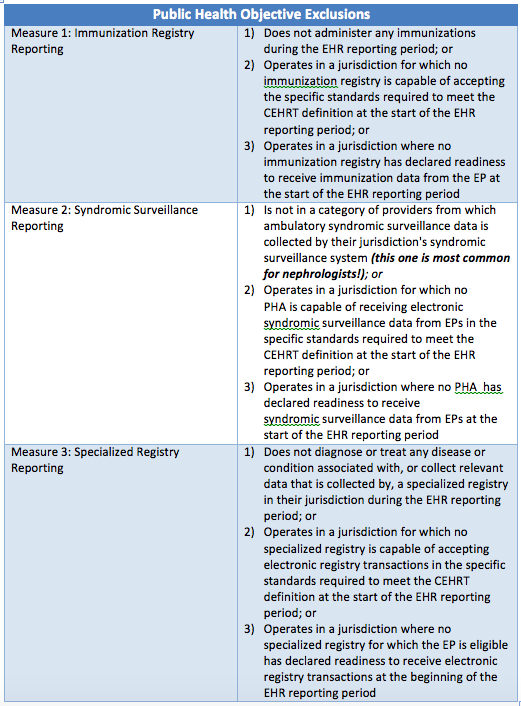 Happy Leap Day! Did you know that leap day occurs in most years that are divisible by 4 (such as 2008, 2012, 2016, etc.), but years that are divisible by 100 (but not by 400) do not contain a leap day to make up for the extra 3 days that would otherwise be tacked on every 400 years. Therefore, the years 2100, 2200, and 2300 will not have an extra day. How’s that for complicated? This year’s leap day has the added bonus of being the last day to register intent to sign up with a public health agency—which is probably equally or more complicated than explaining the gregorian calendar.
Happy Leap Day! Did you know that leap day occurs in most years that are divisible by 4 (such as 2008, 2012, 2016, etc.), but years that are divisible by 100 (but not by 400) do not contain a leap day to make up for the extra 3 days that would otherwise be tacked on every 400 years. Therefore, the years 2100, 2200, and 2300 will not have an extra day. How’s that for complicated? This year’s leap day has the added bonus of being the last day to register intent to sign up with a public health agency—which is probably equally or more complicated than explaining the gregorian calendar.
One of the most commonly asked MU questions I get asked is, “What do I need to do for the public health objective?”
Prior to the modified Stage 2 changes, the answer was quite simple. However, now that CMS has grouped all of the public health related measures into one objective, the explanation got a bit more complex.
What is a public health agency?
Public health agencies (PHAs) collect health information to prevent and contain outbreaks, analyze population health trends, and educate and promote healthy choices for populations. Most commonly, PHAs collect information on immunizations and cases of infectious diseases (syndromic surveillance). However, with an aging population and an increase in noninfectious diseases, PHAs (and national registries) have also started collecting information on cancers and other chronic diseases.
The goal of the public health objective is for eligible providers (EPs) to actively engage with a PHA to submit electronic public health data (created by a certified EHR) with the hopes of moving to a seamless, real-time bidirectional exchange of data.
Choosing your measures
Last year, CMS published a final rule that modified the layout of Stage 2. All of the changes seemed relatively harmless until objective 10 (the public health objective).
In 2016 and 2017, all providers (regardless of stage) have to choose 2 out of the 3 measures listed below.
This requirement is different from the past where providers only had to report the immunization measure and could skip the syndromic surveillance and specialized registry reporting in exchange for other menu measures. Now providers have to take a look at measures 2 and 3 to decide which one is more applicable to their scope of practice.
In each of the measure descriptions, CMS uses the term “active engagement,” which is defined as one of three activities:
- The EP has registered with a public health agency (today’s the deadline to do this!); or
- The EP is in the Testing and Validation phase of data submission with a public health agency (make sure you don’t ignore the PHAs next steps!); or
- The EP is in the Production phase and is submitting data on an ongoing basis to a public health agency (just keep a record that this is occurring for your audit folder!)
Each measure is also accompanied with exclusion options as well.
If measure exclusions are applicable to you, you can be excluded from that measure. It is possible to be excluded from more than one measure (or even all measures). If you are excluded from 2, and the remaining measure is still applicable to you, you must attest to the measure. If you are excluded from all 3, you can choose an exclusion for each one when attesting.
Just because you were excluded last year doesn’t mean you still are this year. Take a look at each one carefully each reporting period.
The bottom line is to attest to the measures you aren’t excluded for.
The Silver Lining
One of the consequences of the public health objective change made in October is it required providers to figure out how to send data to yet another public health agency or national registry. Even though MU doesn’t require an EHR to transport the data electronically, most PHAs/national registries require providers to submit via some form of interface (that normally comes with extra costs and software). The MU final rule also didn’t define how much money was too much money. This left providers in an awkward spot as some registries could cost a practice tens of thousands of dollars just to sign up.
Just a few days shy of the 60-day registration deadline (again, that deadline is today!), CMS released a new FAQ that would allow a provider to take an alternate exclusion for this objective.
If you are a provider who never intended to select the syndromic surveillance and/or specialized registry measure prior to the modified ruling, and you do not have the necessary means to send the data (such as an interface), you can be excluded!
In addition, if there is a significant cost to connect to the PHA/specialized registry, you can also claim an exclusion.
This new alternate exclusion should provide a big sigh of relief to those providers who are still marching through MU. Hopefully this new exclusion will brighten up your leap day and allow you to move on to other pressing matters.
 Diana Strubler, Senior Product Analyst, Health IT Standards, joined Acumen in 2010 as an EHR trainer then quickly moved into the role of certification and health IT standards subject matter expert. She has successfully led Acumen through three certifications while also guiding our company and customers through the world of Meaningful Use, ICD-10 and PQRS.
Diana Strubler, Senior Product Analyst, Health IT Standards, joined Acumen in 2010 as an EHR trainer then quickly moved into the role of certification and health IT standards subject matter expert. She has successfully led Acumen through three certifications while also guiding our company and customers through the world of Meaningful Use, ICD-10 and PQRS.





Sharon says
Hi Diana,
Thank you for today’s post. Several practices in our organization need to purchase a specialized registry but our org is in the process of switching EHR vendors so we really don’t want to purchase a registry through our existing EHR system. However, we will probably not be on our new system until the Q3. Do you think this would qualify for an exclusion to Specialized Registry? These providers are in active engagement with Syndromic Surveillance but do not give immunizations so they are excluded from that measure.
Thanks!
Diana Strubler says
Hi Sharon!
Sounds like you will be having a very busy year ahead! The new FAQ released by CMS basically states that if you did not plan on selecting the specialized registry measure last year (in 2015), you do not have to select it this year. This gives people a lot of relief in 2016. However, for 2017, you will still be on the hook – unless you meet one of the exclusions for the specialized registry measure.
Many people get very confused (rightfully so) on how to select their measures for the public health objective. The rule states that you must pick two. So, as you mentioned, you already selected syndromic surveillance (that’s 1) but you are excluded from the immunization measure. So that makes most people believe that they MUST choose the specialized registry to meet their 2.
However, CMS responded (at the very last minute) last month that providers who did not intend to select the specialized measure last year – can take an exclusion for 2016.
They also stated that if you need to acquire additional technologies to meet the specialized registry measure – or if there was going to be substantial costs – they would allow you to take an exclusion. See the FAQ below.
https://questions.cms.gov/faq.php?faqId=14397&id=5005
So, in summary, you could just choose syndromic surveillance as your only public health objective. You would just choose an exclusion to one or both of the other measures. I would just make sure you have a game plan for 2017 ready!
Sharon Woodfield says
Diana,
Thanks so much for your reply, we greatly appreciate your clarification of this FAQ.
Sharon